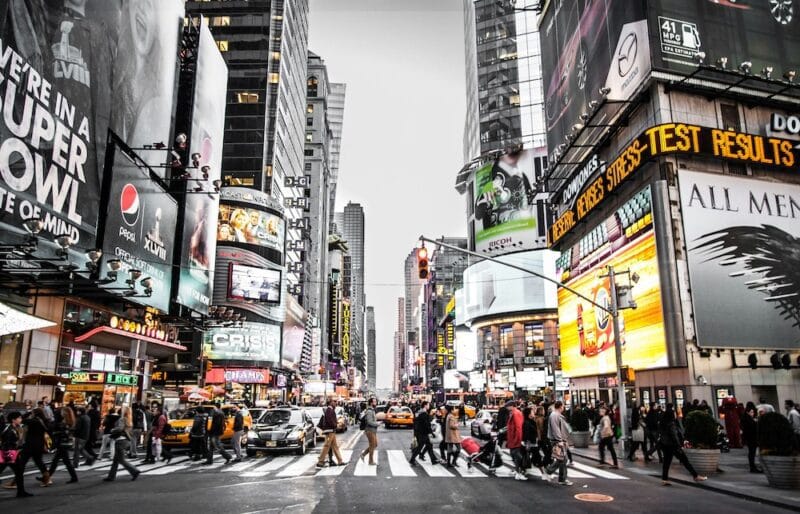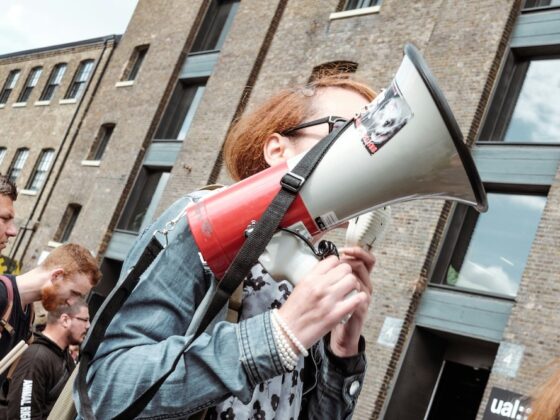Rule Number 1:
Never, never, never pay the first price you are quoted for advertising space.
Rule Number 2:
Never, never, never pay the first price you are quoted for advertising space.
Rule Number 3:
Never, never, never pay the first price you are quoted for advertising space.
Get the picture???
If you have been, or are involved in any type of business then I would make you a bet, a bet that I stand a pretty good chance of winning.
I’d bet that most of the adverts you’ve placed in the past have lost you money; I would go on to be more specific and say that they didn’t cover the cost of insertion.
Well have I won???
If advertising is such a poor way of generating revenue then why do businesses continue to advertise?
Actually I didn’t say that ‘advertising’ was a poor revenue generator, I said that most people who place adverts lose money. The point is that there is a profitable way to place adverts and a way to get shafted by those who bring your product or service to the attention of the buying public.
This report is a shortened version of information you will find in The Omni-Science Principle. It is designed to ensure you get a basic understanding of the advertising industry. It is intended to ensure you get the maximum benefit from your advertising budget. I will give you some ground rules and advise, and a taster of how the advertising industry works but a much more comprehensive study can be found in the relevant module. I want you to have all the tools, up front so as to give your business the best possible start – and you make money right from the outset by learning from others’ mistakes.
Personally I have lost thousands and thousands of pounds over the years on bum advertising and you’d think that I should know what works – I trained and worked for eight years in advertising!!!
I eventually qualified as an art director – ‘a creative type lovie’. I had learnt about demographics, power words, killer copy, high impact visuals, consumer awareness – what I was never taught in all those years at school, college, polytechnic and by the agencies was that most advertising costs more to expose to the target audience than it pulls in revenue.
It took years of trial and error as an entrepreneur, with my own money on the line to discover where I was going wrong.
I learned the hard way – in the trenches.
I could write and design killer ads for sure, but herein lay the problem. Running a profitable advert has less to do with what you’re selling, or how good your advert is, but has everything to with buying the space!!!
Now we all know that there are some products advertised that couldn’t be given away and there are some adverts that are so badly written they couldn’t sell £20 notes for £5 each. These exceptions are not what were about here. Most average, semi intelligent people can knock up something that gets the point over clearly enough (in the Omni-Science Principle I show you how to get your point over brilliantly).
The sad fact remains however that the vast majority of their efforts actually lose money!!!
In today’s market it is no longer a case of designing a good ad, calling the papers and waiting for the orders to come in, although you would find that hard to believe when you scan the glossy Sunday supplements.
You’d think, judging by the sheer volume of media coverage taken up by advertising, that millionaires were being made by the bucket load. Millionaires are being made, oh yes but its generally the publishers who end up with the lions share.
Look again, look through the magazines, newspapers business directories look again at the overwhelming battery of images and persuasive copy – most are not even covering their own costs let alone generating profits.
Why then do advertisers keep on advertising?
The entire advertising industry is one big experiment. A trial and error exercise of biblical proportions.
Professional advertisers know that the first adverts in most campaigns will very often produce little or nothing in return. This is often planned for and eventually, over the longer term a sustained campaign should pay off.
Those campaigns that do increase sales will have a large team of very well paid specialists behind the scenes monitoring progress, tweaking and trimming, changing and modifying to produce an overall result.
We’re talking mega-budgets here though and when you throw into the pot the fact that some companies are prepared to throw away money to simply raise public awareness of their product or service, then the picture really begins to cloud.
Then add to all this the corporate morons who control massive advertising accounts who haven’t the first clue or even give a toss about profits; those who spend money on advertising because they have a budget to spend and its no wonder the likes of you and I get a surrealist’s view.
Running profitable advertising is a science and there are many facets and subtleties to get to grips with. Unfortunately without advertising and marketing of some description no business will survive, let alone expand so if we’re to be successful we have to get to grips with this area of our organisation.
The more adept you become at promoting what you have to offer, the more successful you will become. This is as plain and fundamental a formula you could ever wish to encounter; its as established as E = MC2
Successful advertising/ marketing = business growth
How you manage that growth is another matter but the theorem remains a cornerstone of any prosperous company.
You’d think that because you see ‘Percy’s whiter than white, designer, turbo-biological, anti-static, sterilising washing powder’ in the tabloids every day there would be a huge boost to sales each publication – that’s not true.
Most prime advertising slots come at a premium. They are in high demand because they expose your product or service to the maximum amount of people in one go.
Inevitably competition from companies wanting this space forces up the price so profits become harder to attain. Most prime space adverts do not return their cost in sales.
This is not because the products are not saleable or the adverts are written, or presented badly – the main factor for adverts not covering their costs is purely the cost of the advertising space.
The big players in the advertising business have large budgets and can work on small profit margins over a sustained period. They’ll pay the massive sums charged by the papers to get their advert out because if they don’t another advertiser will. The trouble is that to get your hands on that prime space you need to gazump the big boys, you need to pay more for the space than them – or be smarter!!!
If those with the largest resources find it difficult to get their advertising to pay off what chance have others got when they have to pay more for their space?
The upshot of all this is that we are lead to believe big advertising works – otherwise why would the big boys do it? Large glossy adverts have become the benchmark for us all to aspire to.
‘Once we’ve made it we’ll be able to have our own full page, full colour ad in the national press, no matter what the price. Ok we know this type of advertising costs more than the crown jewels to place but just think of the rewards!!!’
There ain’t gonna be no rewards my friend if you become seduced by the media trap.
Conventional wisdom will have you believe that when starting a new business most of your budget needs to be spent on marketing. This is true, but what most schools of thought leave out is the most significant factor of all.
You need to spend wisely, you need to be penny perfect, you need to ensure each and every cent spent on advertising returns the maximum in sales, exposure, and revenue.
We absolutely, definitely have to get our message across. We want the world to know about our business and if we can shout it large on every prime spot in the country even better.
What we don’t want is to go bust doing it!!!
For this report I want to concentrate on press advertising because that’s probably where your first ads are going to be placed.
It may come as a surprise to some that many newspapers and business publications these days don’t actually make money from selling news, or by producing fascinating editorial. They are in the business of selling space on a page, their whole existence and financial stability rests on drawing the maximum revenue from each page dedicated to advertising.
The problem for the publishers is that Joe Public buy the papers for the news, not the adverts.
Ironically, the news and editorial are just vehicles for moving more publications, to boost the readership. I go into great detail on how the news is manipulated and sensationalised for maximum impact in order to perpetuate the continuation of the media in The Omni-Science Principle.
News sells – the more extraordinary, shocking, and incredible the story, the better it sells.
Sell more papers and you can charge more money for that space dedicated to advertising.
If you’re going to reach 100,000 people in one publication there’s little chance of a rep persuading you to pay the same amount to place an advert in their paper if it only reaches 50,000 people is there?
Melodramatic news stories will move higher volumes of the publication but in most cases its the advertising space that makes the real money.
Imagine walking past the news stand and reading the headline:
Terrorists Get Nuclear Weapons and Threaten to Blow up The World
A sensational headline – you pick up the paper, you read the short body copy on the first page, turn to the next and are confronted with:
Have you got reoccurring incontinence problems?
Do you get embarrassed when you walk through a restaurant and people point and smirk at your wet patch?
Try new Denny’s adult soaker uppers ..
You turn to page 2.
Halitosis a problem?
..and so on. The world is facing Armageddon and because the paper is more concerned with selling advertising by reason of its profitability they sacrifice the copy you bought the paper for in the first place.
A conflict of interests, wouldn’t you agree?
Most publications do not make money from news but have to provide this because its why people buy.
The papers want advertising revenue and will push for as much of it as they can get away with, you want news and editorial.
I have always said that a good deal is where all parties leave the table slightly pissed off, and this is what is achieved in the fight between what the paper’s want and what the public want.
Neither party get 100% satisfaction.
A balance has to be achieved and this is called ‘the advertising ratio’, this gives publications a fixed amount of space to sell before upsetting the readers by compromising editorial. Because the papers don’t make money on the whole directly from news or editorial they have to work out what they need to generate in other areas.
To begin with a publisher will work out all their production costs for the whole publication; how much it will cost in blood money to get their journal into the hands of the reader. Then they divide those costs by the number of pages which produce pay dirt – the advertising.
In some cases there is a cover price also to throw into the equation.
The figure they arrive at is an absolute minimum they need from each page dedicated to advertising space. This is their break even point.
A second figure is then determined which will take into account a desired profit and this will be the target for the sales force – the page yield.
A third figure is then calculated which is the absolute top dollar figure they think they can get away with. It’s what they hope some loony corporate moron with a huge budget would be crazy enough to pay if pushed hard enough.
The rate card.
Imagine if the first call made by a rep one morning was to one of those corporate morons.
Now the dim-wit the rep usually delt with had been promoted to another department and has been replaced by an even bigger fool.
The rep begins their pitch; extols the virtues of their particular publication along with the usual circulation figure – multiplied by five!!!
The advertiser explains that he has a budget for advertising and it has to be spent or he won’t get it again next year.
The rep is on a good commission so they chance their arm. ‘Well sir, could I quote for a double page, full colour advertorial with complimenting company advert all designed by our in-house team. Its a bit pricey but you can be sure it will pull in the orders.’
‘That sounds interesting how much?’ replies the advertiser.
To which the rep quotes double ‘rate card’, and to his astonishment the advertiser accepts!!!
The account is such a great coup that the revenue generated covers the page yield for the whole publication for that week.
The absurd part of this story is that this does happen on a regular basis.
In reality the paper could now go to print and cover the cost of that particular run, a nice position to be in but the point is any further sales for that issue are pure profit.
Remember I explained earlier that profitable advertising has less to do with slick adverts and has everything to do with buying the space?If I could get free advertising space in a national newspaper, I could make money on absolutely anything, and I mean anything!!!
The more you pay for your space the harder it becomes to make a profit. You’re constantly doing battle. There are two points at opposite ends of the spectrum and you’re in the middle.
Point (A) is where you want to be. This is where you are getting next to nothing advertising space in prime slots and making maximum profits.
Point (B) is where the publications want you to be. Paying the most for space and making bugger all!!!
And no, they couldn’t give a toss if you blow you’re whole operating budget on one ad, there are a perpetual flow of advertisers queuing up to be fleeced.
Well the balance of power is about to swing violently in your favour.
I know I’ve gone on a bit about the intricacies of advertising, its a subject I am very keen on.
All you really need to understand for now is this: The first price you are always quoted when inquiring about advertising rates is the ‘rate card’ price. The best possible price the rep can get; it’s Christmas come early if a client pays it.
Get this one lesson etched deeply into your brain and you are half way there.
Understand also that publishers will sell advertising space as profitably as they can get away with.
You need to be pushing them to give it to you for as close to nothing as you can get!!!
I have run several publications. I have seen combat from both corners. I know first hand how hard the battle can be when trying to get a clued up client to pay as close to rate card as possible
I also know all about the wonderful feeling experienced by a rep when a client asks: ‘How much?’ then replies to the first quote with: ‘oh! and how would you like me to pay that?’ … Grrrrrreat!!!
Where to advertise
Let’s begin with where not to pay for advertising.
This report is all about maximising your budget. If you can persuade a publication to run your advert for free or an editorial or press release then put your message anywhere you can get it.
Many smaller publications rely on people with something interesting to say to fill their editorial pages and boost circulation. They will often print a press release just to fill space.
Do not consider placing an ad in smaller journals and periodicals unless they are specialised with a highly targeted audience, but even then the space has to be cheap as chips!!!
Apart from the above exceptions where space is next to free never waste your money in tuppeny, ha penny newspapers and magazines, they will not produce results for several reasons:
- Not many people read them!!!
- They always give you higher circulation figures than they achieve. A lie that is rife in the industry.
- Their cost of space per exposure is extremely high because their advertising ratio is at maximum. They run as many adverts as
- possible to boost revenue therefore your message gets lost. Far fewer people read it than in a national. Although national space is more expensive your money is working harder.
Places to avoid paying for space in:
- Freebie give away publications.
- Ad sheets – where your advert is printed on an A4 sheet along with several others and mailed out to a list. I go into the pros and cons of this method in The Omni-Science Principle but avoid them like the plague for now.
- Small regional papers. Why? Because no one reads them that’s why!!! Your money is better spent elsewhere.
- Weird specialist publications that do not target your specific audience.
- And finally anything with a circulation of less than 100,000
Notice I said a ‘CIRCULATION’. This figure has to be the most misquoted, manipulated, spin doctored number of all time.
Earlier we discussed the fact that if a paper sells more copies then it can charge more for advertising space. Reps will tell you the moon is made of cheese if it gets them a sale. Don’t forget they’re on commission!!!
There are two figures banded about by reps and you have to be very careful which you are being quoted.
- The Circulation Figure. This is the actual number of copies sold.
- The Readership Figure. This is what the rep will try to quote. The theory is that for each publication sold several people will read it. I’ve had reps quote me up to five times the circulation figure!!!
Even large, reputable publishers will quote ridiculous readership figures.
Be sure to establish which figure is being quoted. A spin off from this questioning is that it will show the rep you aren’t a novice and to be wary of bullshitting you.
There are organisations who monitor and audit circulation figures. In the UK the body is called ABC. When you ask for the ABC circulation figure you can be certain that its fairly accurate – so ask for it and don’t be fobbed off!!!
Stay away from anything with less than an audited 100,000 circulation for now.
How to get your ad placed for the best possible price.
Buying space is a game; a contest of bluff and counter-bluff.
Even if you are the only person buying space that day you will never get to know it. The rep will have you believe that there are hundreds of advertisers vying for your spot and that the only way you’re going to get in is to out-bid them all.
It’s far better for you not to advertise at all that week and live to fight another day than lose your shirt because the rep was better at the game than you.
I’m going to give you a summed up version of how to buy cheap space and what to pay.
There is much more to the game and I let you have it all in the Principle. What you have in your greasy paws right now will get you off to a cracking start.
Typically you want to be paying between 30% – 50% ‘rate card’.
Get around, or below 30% and you’re flying.
When you make your initial contact with the publication have the dimensions and details of your ad to hand ask for the ‘rate card price’.
Always offer one third ‘rate card’ as an opening bid. If they don’t accept, thank them for their time AND PUT THE PHONE DOWN (make sure they have your contact details before you do because they may try to call you back its part of the strategy!!!).
Each publication will have a minimum amount they’ll accept depending on various factors. You can be sure they will not tell you what that rock bottom price is and you’re new to them so you have to test the water to find it.
My favourite line when I know I’m close to the mark is to explain to the rep:
‘Come on, I know they give you discounts to hand out to stubborn buggers like me, I know you’ve got a couple more tucked up that sleeve of yours, come on what else have you got?’
Keep going, keep chipping away; every bit of ground they keep has to be given up by you. Remember its a game, the reps enjoy it too, it lightens there day I promise.
I hate shopping with a vengeance, ask my wife!!!
On our honeymoon in Thailand however we did some last day shopping in Bangkok. I’ve never had so much fun buying presents in my life. You see the choosing of the gifts and paying elements were not part of the experience for me.
It was the haggling!!!
I would buy just about anything to have a haggle.
‘How much?’
‘300 Baht sir.’
‘HOW MUCH???’
The fact that the poor shopkeeper was charging the cost of a pint of beer for a beautiful teak elephant that took four months to carve didn’t enter into it.
We both played the game and both had great fun doing it. I ended up with a magnificent present and the shopkeeper ended up with pretty much what he wanted for the carving anyway.
His first price quoted was his rate card!!!
Back to your bartering experience. If you hear nothing that day from the rep try again the next. DO NOT BUDGE ON YOUR OFFER.
Play this out for several days and if they persist in not placing your ad then up your bid slightly.
Keep upping your bid over the next several days until you get a bite.
You’ll get to say, 45% of rate card.
The rep will answer: ‘I’m sorry I can’t do it at 45% but will accept 55%.’
You’re there!!!
DON’T TAKE THE 55%
Tell them that 45% is your absolute limit, and be firm. Play the waiting game a little longer – you’re so close.
You’ll end up paying somewhere between the 45% you want and the 55% the rep wants. What you eventually do end up paying depends on how good you are at haggling.
Anything over 50% and you have to do some serious thinking and testing with the publication concerned.
How to buy the cheapest advertising space of all.
BUY IT LAST MINUTE
Buy the space the national press have not been able to sell.
It doesn’t come up all the time, but it does come up. You need to buy it when it does!!!
Bear in mind that if that space is not sold before the deadline then its dead space. Better to get something for it that nothing at all.
The reps know this but it doesn’t hurt to remind them on occasions!!!
Give the publication your contact details and explain that they can always call you if they have any ‘last minute’ space. There will be others on the reps list so you need to be tenacious – a Terrier that keeps nipping away or a Pit Bull; get your teeth into those reps and don’t let go.
If you get the chance to buy last minute space then snap it up but don’t appear desperate. Remember you’re doing them a favour!!!
Explain that you’ve actually spent your advertising budget this week but as a favour you’ll give them 25% of rate card – you want a better deal on your regular spot in return though.
You’ll probably find that 20% – 25% of rate card is the limit. They won’t take less than that as a matter of principle.
Last minute space can only be bought if the publication have your camera ready artwork to hand so when you’re building bridges ensure you supply them with several artwork options to fit various spaces.
Paul J Tranter










